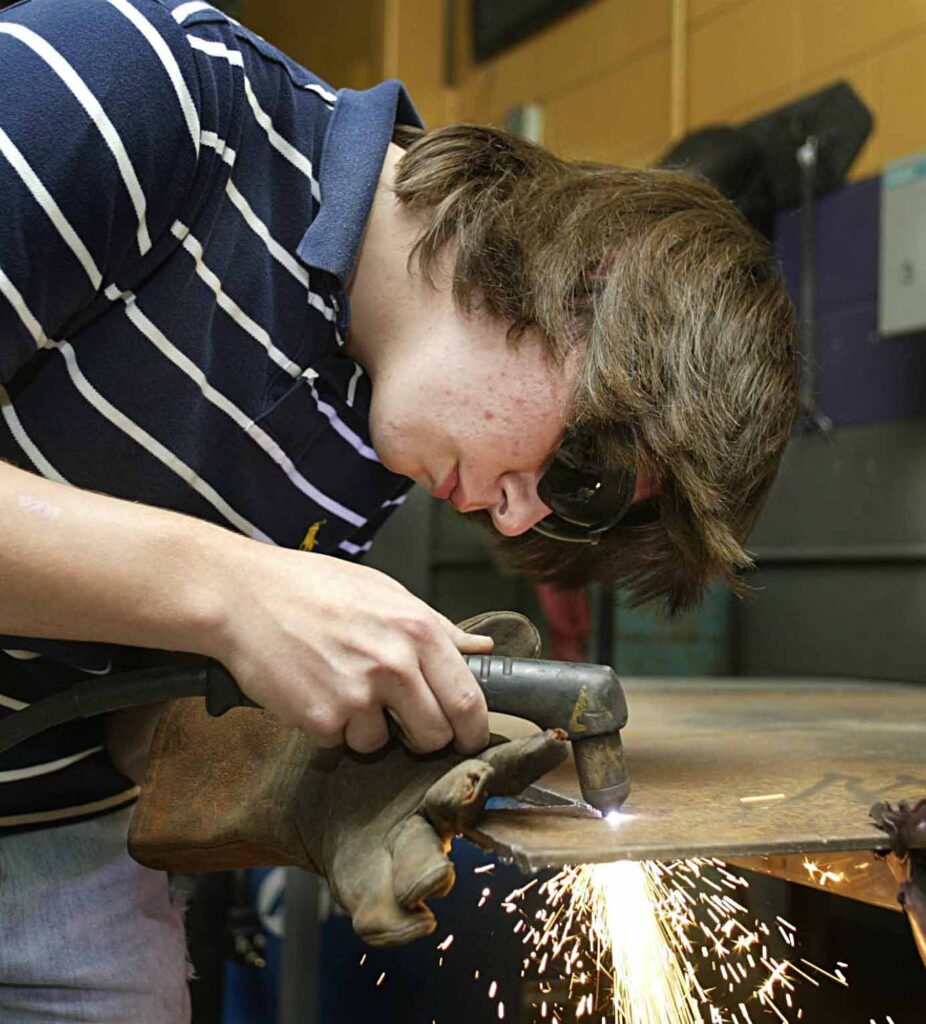Many mechanical and electrical variables influence the cut quality of the plasma cutting process when it comes ot metal fabrication. This being the case, it can be difficult for an operator of a plasma cutter to troubleshoot cut quality and dimensional problems when they arise.
In this blog post, we discuss common sources of plasma cutter problems and offer diagnoses for different excessive bevel angles.
How Does a Plasma Cutter Work?
Briefly, a plasma cutter cuts through electrically conductive materials by generating an accelerated stream of hot plasma. This is achieved when power is supplied to a negative electrode in the cutter, creating an electrical arc which in turn heats the inert gas passing through the tool channel.
This jet of super-heated, electrically ionized gas is plasma. The directed plasma flows from the plasma cutter, through the workpiece, and back to the cutter via a grounding clamp, forming a complete electrical circuit. Sufficient energy is delivered through the controlled radius of plasma to cut through the workpiece.

Common Problems to Avoid
Initiating an arc without enough air pressure: The air pressure in the plasma cutter channel helps to cool consumables. Without it, the arc can overheat the electrode, burning up the tungsten almost instantly. If you hit the trigger with insufficient or no air pressure even once, you probably already damaged the electrode.
Travel speed too slow: A slow travel speed when cutting can also cause the torch consumables to overheat and wear out parts prematurely. Be sure to move the tool at a sufficient speed, particularly at higher amperage.
Dragging the torch nozzle on the workpiece: Dragging the torch nozzle on the workpiece causes the nozzle to overheat, exposes it to slag and generally wears it out very quickly.
Water in the airstream: Water in the air stream suppresses the heat and electrical arc in the torch. If the arc seems to be erratic or unstable, water may be the issue. Install a desiccant system on the compressor or, at the very least, run a small disposable in-line water separator.
Diagnosing Excessive Bevel Angles
Positive bevel: If the tool is cutting an excessively positive bevel angle (meaning the top of the workpiece is smaller than the bottom), there could be several potential causes. A worn nozzle, high arc voltage, inadequate amperage or excessive speed could be causing the arc to lag, in turn causing more energy to contact the top of the workpiece than the bottom.
Negative bevel: If the tool is cutting an excessively negative bevel angle (meaning the bottom of the workpiece is smaller than the bottom), there could be several potential causes. Low arc voltage, excessive amperage or low speed could all cause the arc to remove more material at the bottom of the workpiece than at the top.
Irregular bevel: Irregular beveling (meaning the same workpiece demonstrates both positive and negative bevel angles) usually indicates that the nozzle is severely worn or has failed in some way. The electrode may be damaged or misaligned or water may have entered the air stream.
Understanding these common issues can help you troubleshoot problems with your plasma cutter. Furthermore, careful control of these mechanical and electrical variables can help you keep your plasma cutter in good working condition and avoid cut quality issues in the first place.
